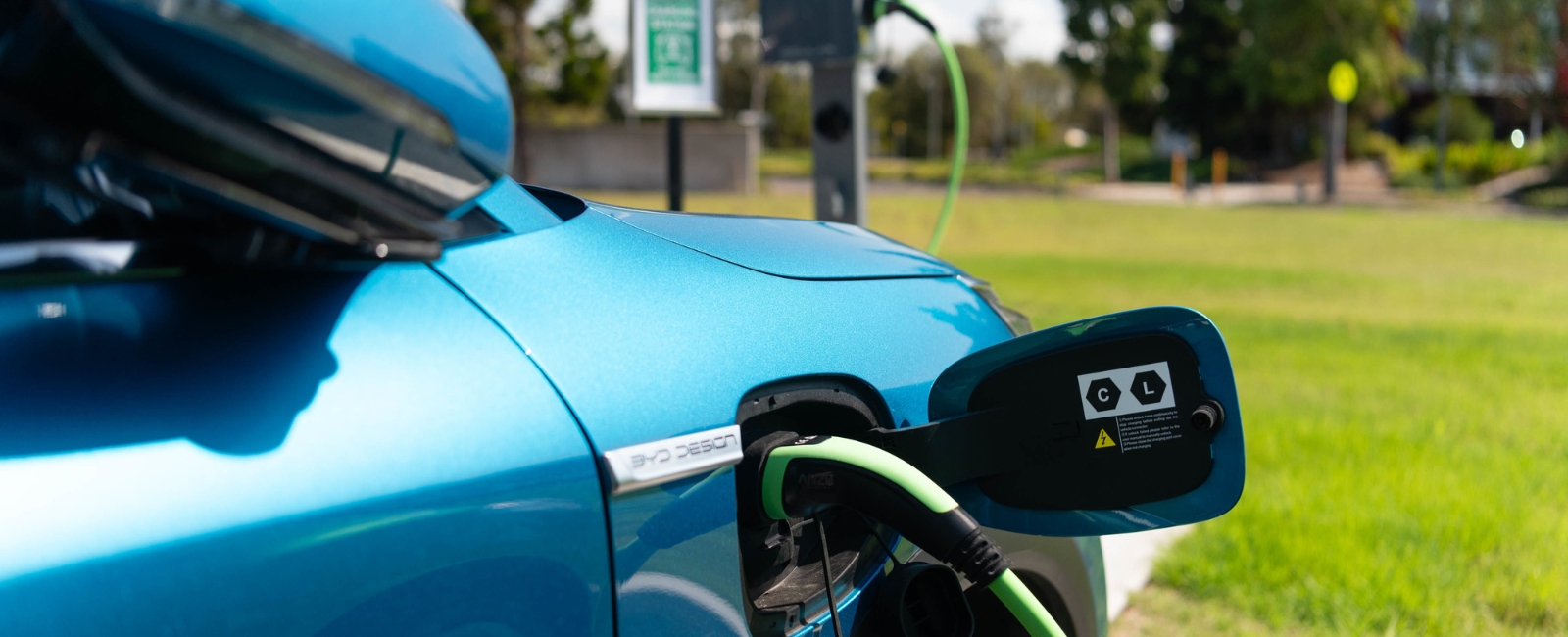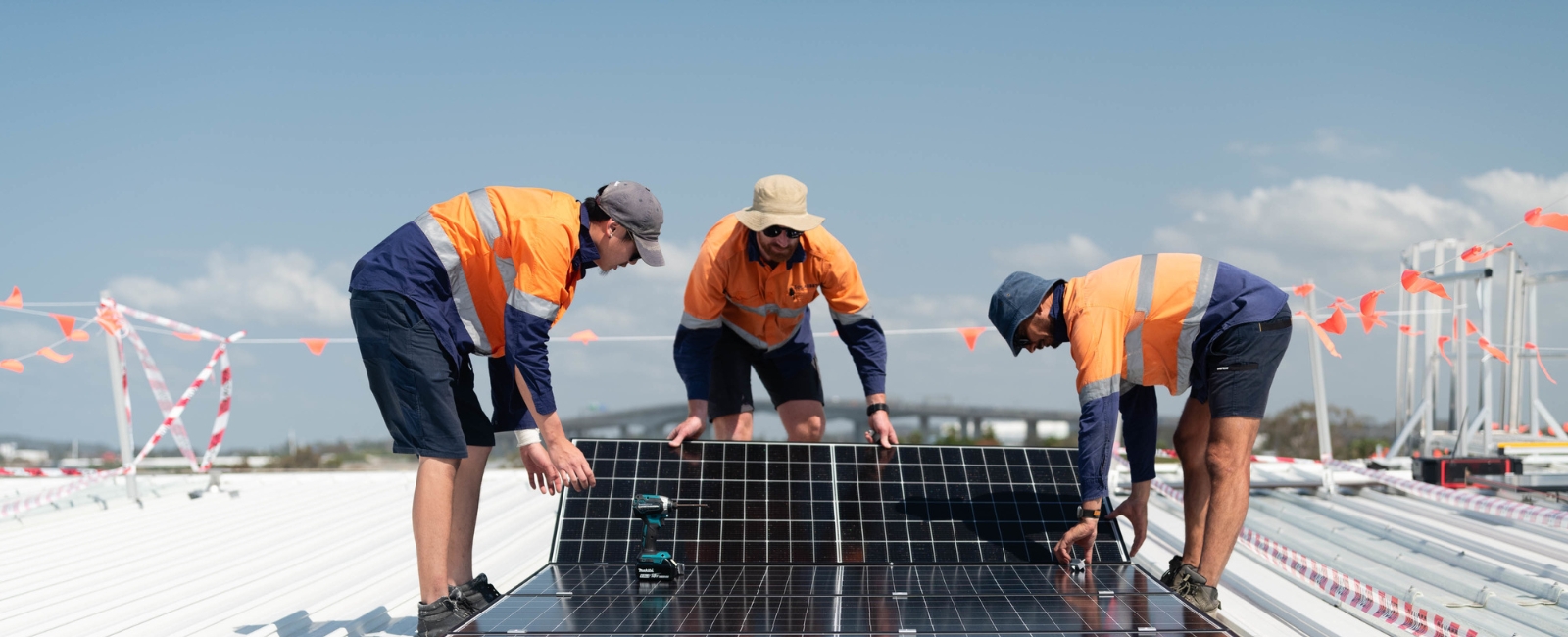
As Brisbane Airport continues to evolve to meet the growing demands of travellers, sustainability continues to be a strong focus in its latest infrastructure projects. Two major car park expansions – the P2 Parking Extension at the Domestic Terminal and the AIRPARK Expansion – are set to deliver more than 3,400 parking spaces for passengers while integrating environmentally conscious design features.
For Karl Skoroszewski, Senior Project Manager on the P2 Extension, a key factor in the project’s sustainability lies in material selection. “For the P2 Extension, we’re using Boral’s Envirocrete Plus, a lower carbon concrete that reduces Portland cement content by 45%,” Karl explains. “This is the first time Brisbane Airport has used lower carbon concrete for a multi-storey car park, and with more than 10,000 cubic metres needed for the project, it’s a significant volume.”
Recycled materials also play a big role in the build. The project incorporates 75% recycled content in reinforcement steel – going up to 92% in the threaded rods – along with recycled asphalt containing 20% recycled content. Rainwater capture and irrigation will support a planted southern facade, and energy-efficient LED lighting will reduce overall power consumption.
AIRPARK’s Expansion follows a similar approach to sustainability. Troy Dean, Senior Project Manager overseeing the AIRPARK Expansion, highlights the project's focus on reducing waste. "We have been able to reduce waste by reusing materials from other projects on airport land," he explains.
This project took on a considered sustainability design, implementing initiatives such as recycled asphalt pavement and lower carbon concrete for footpaths, driveways, and foundations. Additionally, measures have been taken to reduce the overall concrete required, including the use of plastic drainage pipes, wheel stops made from recyclable materials, and Rombus, a flexible pavement solution, made from recycled plastic, that further minimises concrete usage.

Both projects have been designed with the future of electric vehicles in mind with provisions made to accommodate EV chargers in both expansions. “At AIRPARK, we’re installing solar panels on the covered entry roof structure, which will feed into the airport’s wider energy network and a battery storage trial,” Troy adds. “Along with EV charging stations, this will help improve the sustainability of the precinct.”
The AIRPARK project battery storage trial is a first for Brisbane Airport. Tiana Wetzel, Sustainability Lead at Brisbane Airport, sees this as an important step towards smarter energy use. “This trial will test how we can store energy and better manage power use within the precinct,” Tiana says. “If successful, it could help inform future renewable energy initiatives across the airport.”

Our process isn’t just about using sustainable materials – it’s also about reusing what’s already available to promote a circular economy. “We’ve been able to carefully remove and clean 800 metres of the existing car park facade for reuse,” Karl says. “Additionally, where possible, we’ve reused excavated materials on-site, reducing transport emissions and landfill waste.”
The AIRPARK Expansion is also repurposing an existing bus shelter, moving it to a new location rather than demolishing and rebuilding.
These parking projects align closely with Brisbane Airport’s sustainability vision of growing responsibly with a particular focus on sustainable design. “Sustainable design is a core requirement for our projects,” Tiana says. “Through early engagement with industry partners and subject matter experts, we’re weaving these principles at each stage of the design and construction process.”

A modelling exercise was conducted for the car park expansions to assess the carbon impact of different sustainability initiatives. This data helps quantify the benefits of each initiative and assists the airport in making informed decisions to continue its approach to infrastructure sustainability.
Beyond the environmental benefits, the expansions will improve convenience for passengers. “We know that ultimately, travellers just want easy, stress-free parking options close to the Airport,” Karl says.
Brisbane Airport’s sustainability efforts are ongoing, and in January 2025, the airport reached net zero for Scope 1 and 2 emissions – an important milestone made possible through emissions reductions and energy efficiency improvements. While there’s still more to do, projects like this help nearly 25 million passengers travel knowing the airport is actively working to minimise its environmental footprint.
Learn more
- Discover more Future BNE projects planned over the coming decade to transform Brisbane Airport.
- Stay up to date: Sign up for our Future BNE eNewsletter to stay in the know, with updates direct to your inbox quarterly.

